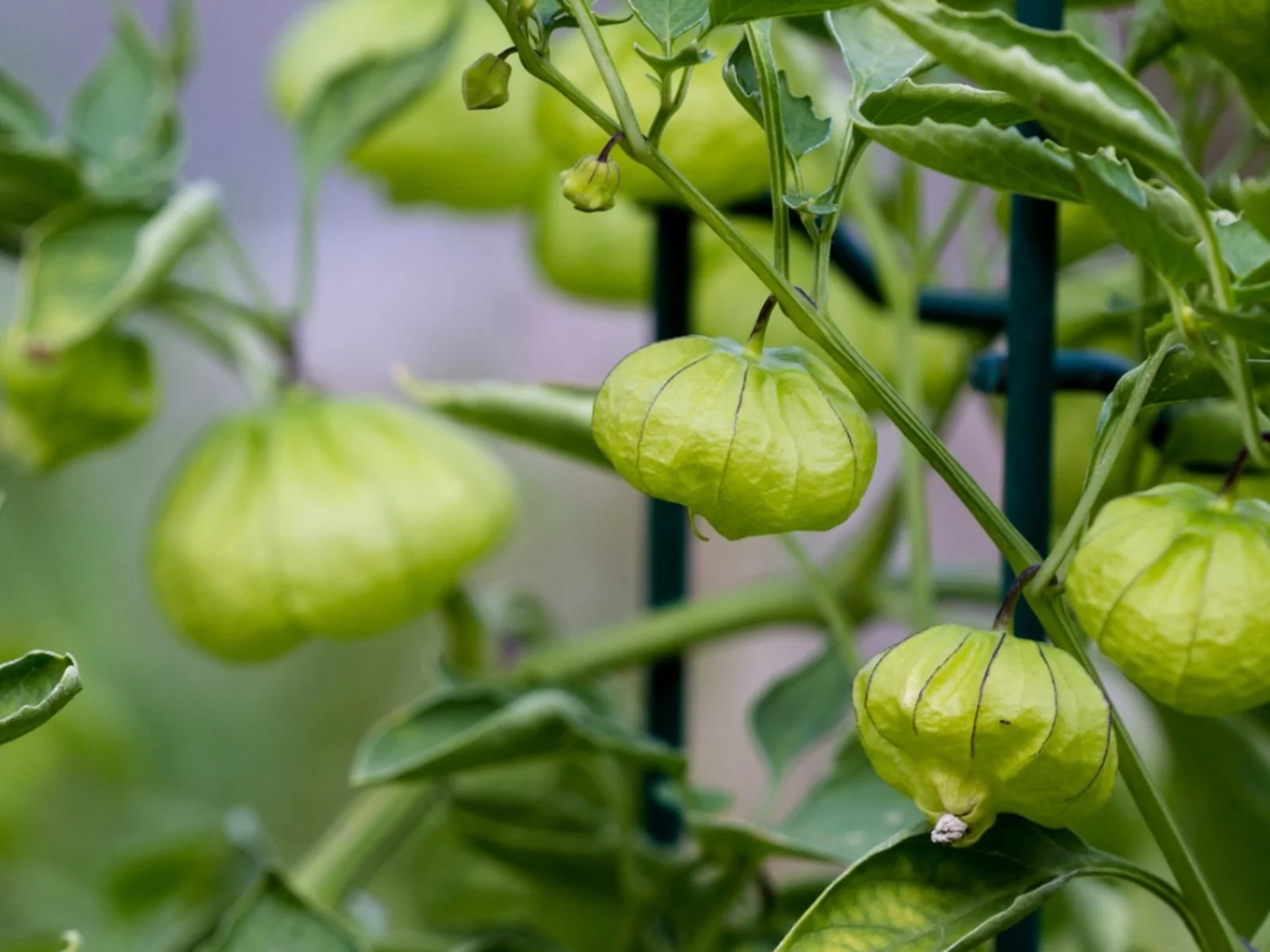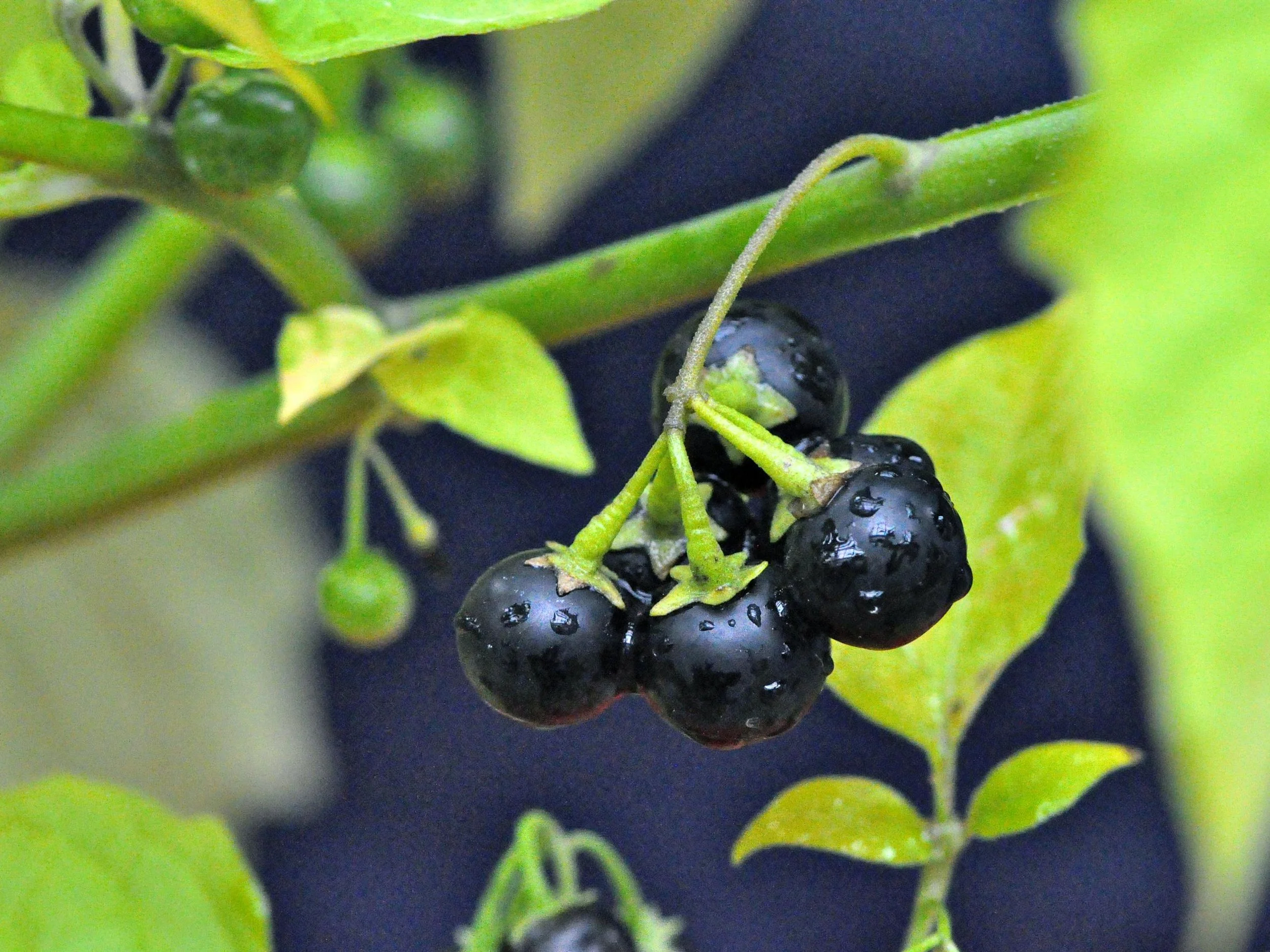CULTIVATING TOXICITY
Last week, several members of our community alerted us that tomatillo seedlings they purchased from us in the spring turned out to be an entirely different plant popularly viewed as poisonous. After dealing with what one of our Instagram followers aptly called a botanical scandal, our Co-Founder and Chief Impact Officer Anastasia Cole Plakias came away with larger reflections on our food system and the way we view plants. Read on for her takeways from tomatillogate.
The offending plant, Black Nightshade, Solanum nigrum (Photo courtesy of https://wildfoodgirl.com/)
Reflections on our food system and horticultural history from Co-Founder and Chief Impact Officer, Anastasia Cole Plakias.
Earlier this spring, Brooklyn Grange sold a valuable account a couple flats of seedlings that we thought were tomatillos. Wednesday, we got an email from a customer who purchased one of those seedlings, and instead of the husk fruit they expected, found it growing clusters of dusty-looking round, black berries. I recognized it right away as something I’d looked up in the past–I’ll pull my phone out to ID anything resembling food in the wild to find out whether I can eat it–but I wanted to be sure I was recalling it correctly. So, I uploaded the photo our customer had sent into my app, and there it was, next to a big red triangular hazard symbol: Black Nightshade. Here’s what it said:
“Black nightshade (Solanum nigrum) is a highly toxic plant and caution should be exercised around this plant. It’s said that black nightshade fruits can technically be consumed if they are fully ripe and properly cooked and prepared. Generally though, due to the danger they present, no one would ever want to try and eat this plant.”
And so, with due apologies and a farmstand voucher to make up for it, I advised the customer to uproot the offending seedling. Then I moved on with my day.
Innocent, growing tomatillos. (Photo Courtesy of Charles Wollertz)
Also innocent (!) growing black nightshades. (Photo Courtesy of Ohio State University)
Yesterday, we received another email–along with notifications that we’d been tagged in Instagram posts, stories, and tweets–from a local gardener who’d also bought a black nightshade seedling. This gardener had the same plant ID app I did. She also shared her garden with her landlady and her landlady’s small children, and she was horrified that she may have inadvertently exposed them to a life-threatening toxin.
As the mom of a 16 month-old toddler who is happiest when browsing Brooklyn Grange’s growing beds, touching, smelling, and even tasting plants, I felt her concerns viscerally. I had just taken my son foraging for wild blueberries and could easily imagine him mistaking the inky nightshade for a friendly fruit. I took a deep breath, told her I would make it right with her, but that I needed to prioritize issuing a voluntary recall on the rest of the seedlings. I harangued my teammates, who were deep in a huge harvest on the hottest day of the year, to drop everything and help me track down where we got the seeds, how many plants we’d sold, and contact info for the client so they could rebroadcast the message I began drafting for our social channels. Caption complete with ALL CAPS HEADER bookended by siren emojis, I searched for an image of the offending plant to accompany the post. I clicked on a nice, Instagram-quality glamor shot of the noxious fruit dangling from a leafy stem–but what loaded on the screen before me stopped me in my tracks.
It was a blog post, with recipes, detailing the author’s recent attendance at a Black Nightshade dinner. There were tamales dressed in nightshade salsa; seedy, deep purple jams adorning scoops of ice cream. I was flabbergasted. So I turned to my favorite resource on foraging, Alexis Nikole Nelson, known online by her Instagram handle, @BlackForager. And here’s what I learned from her:
“Black nightshade got a bad rap somewhere through history with Europeans. Like its nightshade cousin, potatoes, eating underripe fruits can give you “solanum poisoning” (a tummy ache!). Its culinary roots lie mostly in Africa and Southern/Eastern Asia, “so you can see why it gets left out of talks about food (racism!).”
When you work in the American agriculture industry, which is rooted in the twin evils of stolen land and the enslavement of people, racism is ever-present. But even in the world of foraging, amidst the beautiful freedom of nature and wild plants, capitalism and white dominant culture have a long history of perpetuating inequity. Not only are the food plants of non-European cultures widely erased from modern-day culinary conversations, but wild plants are also devalued because they proliferate freely and are freely harvested, which means they are of no use to a food system rooted in exploitation and profit. And this doesn’t even take into account historical laws criminalizing foraging that served to keep Indigenous and African American people from accessing the bounty of the lands on which they lived–and keep people who were formerly enslaved tethered to a system of low-wage farming labor in the process.
Here we are, a century and a half later, and well beyond the days of share cropping (well… not really, but that’s another topic for another time), yet we’re still afraid of wild foods. Ok, ok–it’s worth acknowledging that Black Nightshade bears a resemblance to a very poisonous false friend, Deadly Nightshade, or Belladonna. But the two are pretty distinct, and if we weren’t so alienated from the plant world, we might be better at distinguishing them. Meanwhile, the food system we built, ostensibly to protect us from these dangers, is just as toxic: when we’re not issuing recalls on e-coli tainted greens and berries, we’re slowly poisoning ourselves with refined sugars and fats, and our planet with ecologically devastating growing practices.
Yesterday was frightening for our customer and the community with whom she shares her garden, which I regret. Even more regrettable is the culture of fear that we’ve built around what should be the spaces where we feel most free. I rue our culture of liability and litigiousness where we should be most generous. I am so sad for us that our encounters with nature are guided by colonialism and exploitation, rather than ancestral wisdom and curiosity. I’m also deeply grateful for this perspective, which I’ve learned from teachers on the internet, in the pages of books, and on our rooftop farms.
While tomatillogate derailed my morning, it was a welcome opportunity for me to reexamine my own toxic attitudes toward food, and how they’ve been influenced by our culture. Ultimately, I wonder if we can ever repair our relationship with food plants while profiting from them. More and more, as my colleagues and I work deeper into the value that food should be a right shared by all and not a privilege shared by few, I question whether we can fix our food system, or whether we have to abolish it altogether, and start from scratch.
I believe food should be free.
Sources:
Nelson, Alexis Nikole. “Alexis Nikole on TikTok.” TikTok, 28 July 2021, https://www.tiktok.com/@alexisnikole/video/6990126746586647814
“Black Nightshade — Forager’s Harvest.” Https://Www.foragersharvest.com/, Samuel Thayer, 9 Dec. 2016, https://www.foragersharvest.com/uploads/9/2/1/2/92123698/black_nightshade.pdf.
Gravalese, Stephanie. “The Odds Are Stacked against Black People Who Forage for Food. Here’s Why.” HuffPost, HuffPost, 25 May 2021, https://www.huffpost.com/entry/alexis-nikole-nelson-black-forager_l_60998048e4b0ae3c6881f3b9.
Davis, Erica M. “The Delicious ‘Wild Wonderberry’.” Wild Food Girl, 1 Oct. 2019, https://wildfoodgirl.com/2019/the-delicious-wild-wonderberry/.



